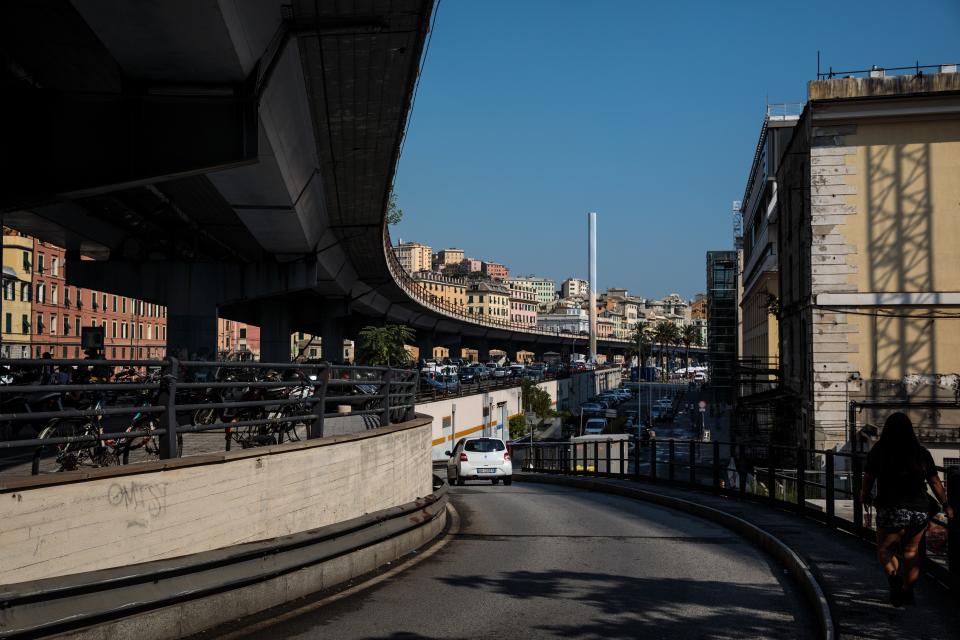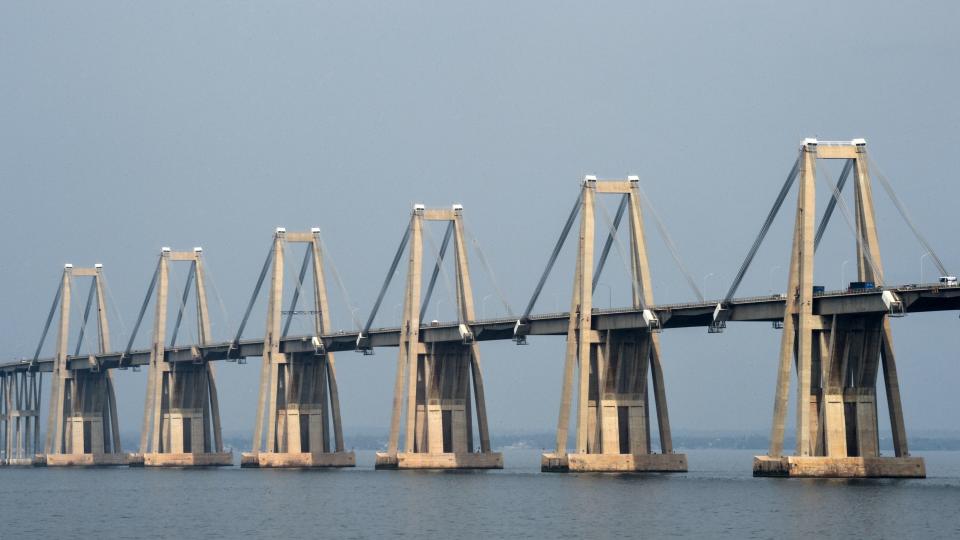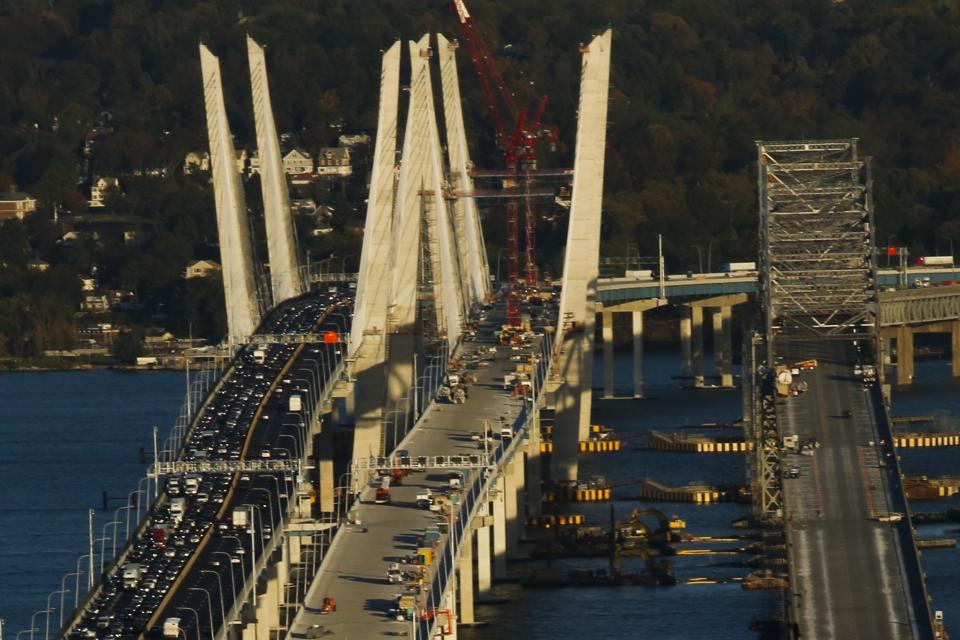Major Bridges Around the World Are Collapsing—Here's Where the Risk Lies
Even if you regularly see a dentist, sometimes—no matter how carefully you’ve followed your dental hygienist's advice—you need a root canal. The bridges of the 1960s may be a lot like our teeth: Maintenance to stem their decline eventually runs its course, and at a certain age, they require a dramatic intervention.
Last week, a viaduct called the Ponte Morandi collapsed in Genoa, Italy, killing 43 people. The catastrophe raised concerns about bridges of this vintage and design—and, for some, the fate of all aging infrastructure in the west.
Now, questions swirl about responsibility for the bridge’s upkeep: Was it the moisture of the port city of Genoa that was to blame? The corrosive pollution from a nearby steel plant? Eerily, the bridge’s architect, Riccardo Morandi, himself said in 1979 that he thought sea air and the steel mill could cause significant problems. The former president of the Society for Structural Engineers said the maintenance itself might have caused the collapse. And Giacomo Pirazzoli, an architecture professor in Florence, says concrete used when the bridge was initially constructed was mixed incorrectly, throwing off the viscosity. Other authors have agreed.
A criminal inquiry has been launched and both the private company responsible for the bridge’s upkeep—Autostrade per l’Italia—and M5S, the largest individual political party in the Italian parliament (which happens to oppose funding major infrastructure projects), have been pilloried. But the question remains: How many other bridges are at risk?

Aftermath Of The Morandi Bridge Collapse in Genoa
The Ponte Morandi, also sometimes called the Polcevera bridge, has a pre-stressed concrete mix encasing cable stays, of which there are few compared to many other bridges of its size. Building the bridge over a pre-existing city meant minimizing the number of stays was functional and an aesthetic choice. The concrete encasement made it difficult, if not impossible, to adequately inspect the stays.
“Riccardo Morandi was one of the most innovative civil engineers in Italian history,” says Antonio Occhiuzzi, a professor of structural engineering at the Parthenhope University of Naples. “There is no [design] flaw that can be directly related to the failure.”
Morandi was credited with creating a light, durable bridge with minimal disruption to the dwellings in the valley the Ponte Morandi crossed, and doing so with lower-cost materials. Morandi’s “real innovation in this bridge was to use reinforced concrete as the cable stays rather than high-strength steel,” says Neil Hawkins, a professor emeritus of engineering at the University of Illinois.
The design of the Ponte Morandi was not common, Occhiuzzi says. “It only was needed where special problems did not allow use of 'standard' solutions. In this case, there was a need to build a highway bridge on a urban zone.” Building over a city precluded a higher number of columns. However, the concrete encasements necessitate more attention than in other designs. “Early on in its use Morandi noted that the bridge may need constant and frequent maintenance,” Hawkins says. “The lesson is that in such bridges a special care has to be taken for the stays,” Occhiuzzi adds.

VENEZUELA-ITALY-BRIDGE-EMERGENCY
It appears that outside of Italy, only two bridges with Morandi's design remain, and only one is still in operation. CNBC points to two that have the same design as the Ponte Morandi in Genoa: the General Rafael Urdaneta Bridge in Venezuela, and the Wadi el Kuf Bridge in Libya. The former was closed late last year after inspections showed “potential fractures;” the latter has already survived a run-in with an oil tanker in 1964, but it’s not clear if it will be closed, or even thoroughly inspected, amid the worsening political situation in Venezuela.
Any remaining cable-stayed bridges built with pre-stressed concrete—especially if they have the same or similar environmental factors to contend with—should be continually inspected, experts say. Occhiuzzi notes that other bridges designed by Morandi “are alive” in Italy, but “required special care” for the stays. Why the Genoa bridge’s stays did not receive more attention is not yet clear.
Pirazzoli says some estimates show that 10 times as much traffic was crossing the bridge than what it was originally supposed to accommodate. “A resilience-oriented approach creating a new bypass highway to share traffic” would have been the best way to handle the bridge’s unexpected load, he says, but a proposal to construct one was rejected in 2009.
Some observers even think it’s time to stop spending on bridges’ upkeep and build anew. “Thousands of bridges are coming to the end of their days,” reads a recent report in The Economist. They point out that OECD countries that spend more on infrastructure maintenance than their peers, such as Italy and Greece before austerity, have not necessarily had better outcomes. Countries who take the opposite tack, such as Britain and Austria, have garnered better scores on the quality of their roads, for instance. The Economist estimates that Italy had spent 80 percent of the cost of replacing the Ponte Morandi on attempts to repair it before the collapse.

New Tappan Zee Bridge Open for Heavy Traffic in New York
But the reluctance to tear down bridges relates to more than money and safety. Built during Italy’s most prosperous era—between the time when Marshall Plan funds kick-started the previously beleaguered nation’s postwar economy but before the slowdown of the '70s—such infrastructure is a physical reminder of Italian resilience and innovation. Indeed, the August 15 collapse left a gaping chasm in the city of Genoa, and likely the Italian economy, as the bridge was an important connector between the port city of Genoa and northern Italy. The rapid urbanization of postwar Italy meant many bridges and other infrastructure built quickly, but sometimes with restrictions in materials. Disasters like the 1963 Vajont Dam landslide and flood highlighted the risks of the transformation that was sometimes heralded as “the Italian economic miracle.”
The threat, however hard to quantify, of cable-stayed bridges’ decay is not unique to Italy or to Morandi bridges in any way. Though we don’t have bridges with concrete cable stays in the U.S., says Hawkins, we do have some with concrete stays. The pedestrian bridge that collapsed at Florida International University in March, killing eight, was one such example. The “unconventional placement of diagonal supports in an uneven zig-zag pattern” eventually drew the blame, however, according to a report from the Miami Herald.
Meanwhile, New York's Tappan Zee bridge, which is cable-stayed, is in the process of being replaced—but at the staggering cost of $4 billion.
Pirazzoli says Italy is now in the grip of a “panic reaction,” with mayors all over the country closing bridges and conducting highly visible inspections, throttling commerce and travel. Sadly, what the infrastructure of the entire west needs is a far less dramatic response: careful maintenance.
RELATED: 50 of the Most Dangerous Bridges in America

